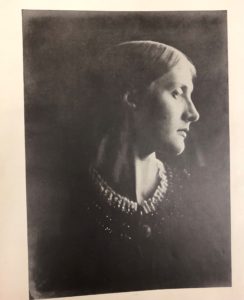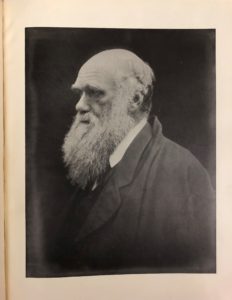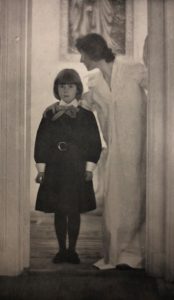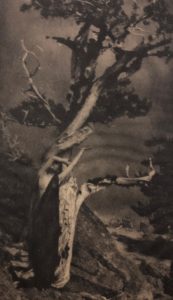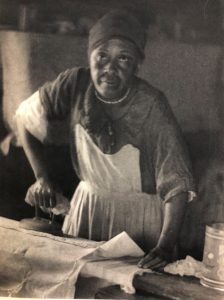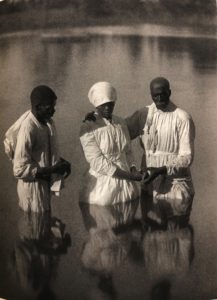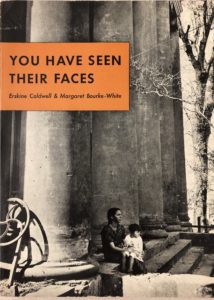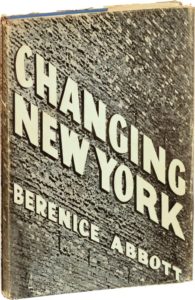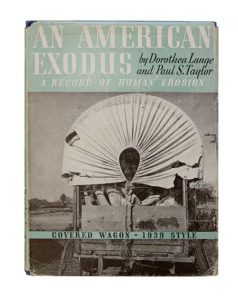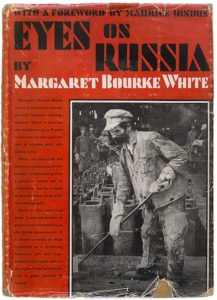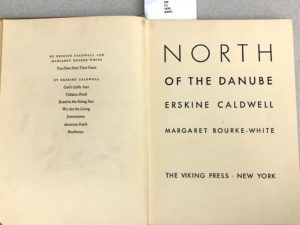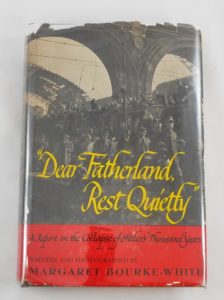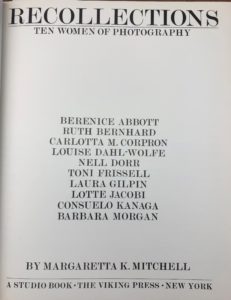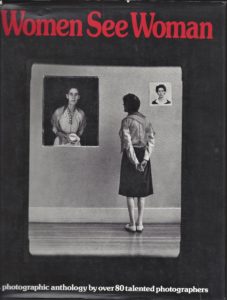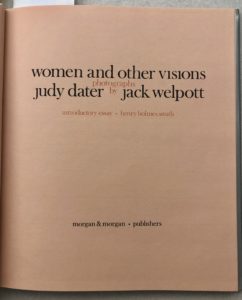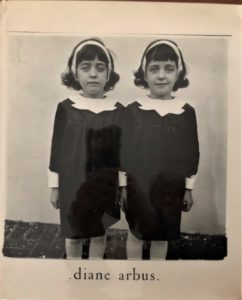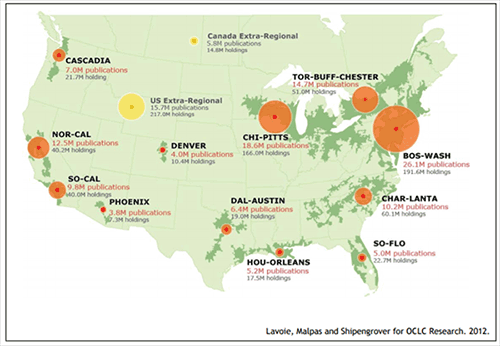Tag: special collections
Photobooks by Women in the Reva and David Logan Collection
A posting by Christine Hult-Lewis, Ph.D., Reva and David Logan Curatorial Assistant
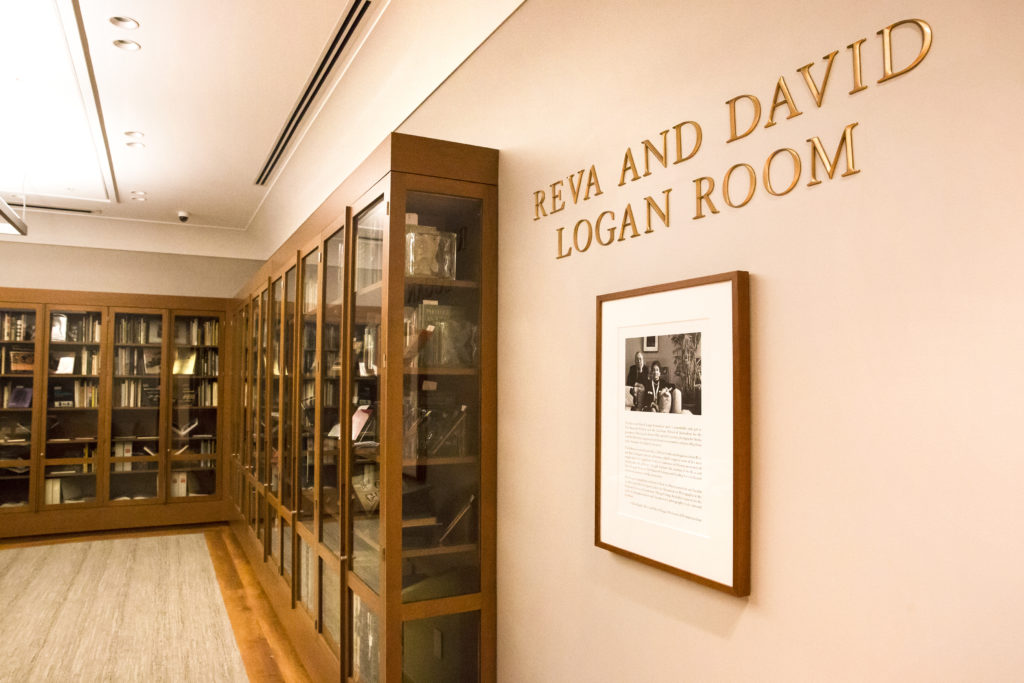
Tucked in the shelves of the Bancroft Library’s Reva and David Logan Collection of Photographic Books are some exceptional photography books by women photographers. Books illustrated with photographs were and are incredibly important in the history of photography: they are the best means to disseminate an artist’s work, are more readily available than photographic prints, and can wield an outsize influence in the public arena. Here is a selection of some of the most significant books by women in the collection.
EARLY MASTERS
One of the best known and most influential photographers of the nineteenth century is Julia Margaret Cameron, whose insightful and penetrating soft-focus portraits redefined the genre. Cameron was most interested in getting at the “truth” and “beauty” of her subjects; her best portraits strip away all context in favor of a focus on the face itself, as in the above image of her niece Julia Jackson (Virginia Woolf’s mother). Some forty-seven years after Cameron’s death, Victorian Photographs of Famous Men and Fair Women was published by Woolf, who also contributed an introduction.
Most women didn’t produce their own books until the early decades of the twentieth century, but some shared their work in the pages of Camera Work. This seminal photography periodical, edited by Alfred Stieglitz from 1903-1917, regularly featured women in its pages, such as Gertrude Käsebier, whose work appeared in the inaugural issue, and Annie Brigman. Both used the familiar techniques of Pictorialism—soft focus, romantic subject matter—in their beautifully printed photogravures. Each addressed different aspects of the female experience: Käsebier emphasized the maternal bond and motherhood, while Brigman focused on the symbolically-charged interplay between women’s bodies and the natural world.
The Pictorialist aesthetic championed by Käsebier, Brigman, and others would continue into the 1920s and 30s with photographers like Doris Ulmann. Ullman was interested in rural America and folk cultures, part of a general reassessment of what constituted authentic “American-ness” during the 1930s. The result was the 1933 collaboration Roll, Jordan, Roll, with Ullman providing the delicately-printed photogravures and author Julia Peterkin providing text. The book describes the lives of the Gullah people, many of whom were former slaves living in the coastal areas of South Carolina and Georgia. Ulmann’s images provide a sensitive and nuanced portrayal of lives lived in quiet dignity.
DOCUMENTARY PHOTOBOOKS OF THE 1930s
Some of the most influential photographic books of the Depression era were by women. Margaret Bourke-White’s You Have Seen Their Faces concentrated on what she and Caldwell perceived as the ongoing problems of the South: its extreme poverty, its pernicious and ongoing racism, and its damaged people. The book was popular, though it had, and has, its detractors, who objected to its condescending tone. By contrast, Dorothea Lange was one of the most respected practitioners of documentary in the 1930s, and made sure to give her subjects their own voice(s). Lange worked under the aegis of the US government-sponsored Farm Security Administration, taking photographs intended to help support the various projects of agricultural reform. This book was a true merger of empathetic, artistic images and dispassionate, statistical text. Another government-sponsored project, Berenice Abbott’s Changing New York, shifted the attention from rural people in distress to the changes and dislocations of that quintessential American city, New York. Abbott was particularly attuned to the beauties of the ever-changing city, and the transformations wrought by that peculiarly modern structure, the skyscraper.
PHOTOJOURNALISM
Margaret Bourke-White wasn’t really a documentarian; her true metier was photojournalism. She worked for the earliest pictures magazines in the United States, Fortune and Life. Bourke-White was the first photographer to go to Soviet Russia; sent there by Fortune in 1930, her experiences there became the book Eyes on Russia. Concurrently with her work on picture magazines, she wrote or co-wrote twelve books, five of them during the war years. She spent much of the war in the European theater of operations, where she became accredited as an official Army Air Force photographer. She worked incessantly, took all kinds of risks, made thousands of pictures, and managed to churn out books at an astonishing rate. North of the Danube recounts the months when Germany invaded Austria and Czechoslovakia, while Dear Fatherland, Rest Quietly attempts to grapple with the horrors of the Holocaust. The Logan Collection has fine examples of every one of her books.
THE 1970s
By the 1970s, the lack of women in the photographic canon did not go unnoticed by women artists, feminists, and their allies, and they sought to redress this exclusion and promote a more inclusive point of view. This took place in not only in museum exhibitions but also in photobooks, including anthologies like these that sought to uncover the work of women photographers whose names had dropped off the radar of popular culture and photographic history.
New monographs by young photographers like Judy Dater explicitly explored gender, examining different conceptions of femininity, sexuality, and agency in portraiture. Dater’s work can be seen as a kind of modern extension of Julia Margaret Cameron, in her explorations of the human psyche through expression, gesture, and light itself. Diane Arbus—this book of her photographs would not be released until after her death in 1971–would redefine the documentary project with her highly-charged photographs in the 1960s. Like Bourke-White, she took risks and went where others dared not go; she could almost be described as a photojournalist of the psychological.
The Logan Collection is a wonderful resource to study the photobooks by women, as well as many other themes in the history of photography. I hope this brief overview of this collection sparks further study. For more information, see the online overview of the Logan Collection. Books are available for onsite use in Bancroft’s reading room, and can be requested from OskiCat via our online paging system.
Viewing History through Photographic Negatives: One Chapter in the Travels of the Black Panther Party International Section
A guest posting by Bancroft researcher E. Rafael Perez
We are happy to present a guest posting by researcher E. Rafael Perez, who shares his experience viewing original photographic negatives in the Bancroft reading room. Negatives, often with no matching prints extant, are made available by appointment with a week’s notice. Researchers may make their own reference snapshots for personal study, as illustrated below, and may place photo orders for high quality digital imaging of selected items.
Since being acquired by the Bancroft Library, the Eldridge Cleaver Papers have given scholars a glimpse into his eclectic experiences. Spanning his early days as Minister of Information for the Black Panther Party, continuing into his time in exile as head of the Black Panther Party’s International Section, and following right on through to his eventual return to the United States—after which he served time in prison, became a born-again Christian and made appearances in support of the Republican Party—the Cleaver Papers and the Eldridge Cleaver Photograph Collection provide context into a complex and layered life. The rarely-seen photographic negatives found in the Eldridge Cleaver Photograph Collection provide consequential traces of life events not covered by other parts of the collection.
For the uninitiated, photographic negatives are the in-camera originals of 20th century photography, in the form of sheets or strips of film in which the darkest areas of a photographed subject appear lightest and the lightest appear darkest. At the Bancroft Library, negatives are stored at 40 degrees Fahrenheit and 30 percent relative humidity. Interested parties make an appointment ahead of time to schedule a viewing, as negatives must spend some time acclimatizing before use. This process highlights archivists’ challenge of balancing the best practices of presentation to the researcher and the best methods of preservation. Nevertheless, examining the over 480 35-millimeter negatives of the Eldridge Cleaver Photograph Collection provides fertile ground for historical exploration.


In 1970 Eldridge and Kathleen Cleaver traveled to North Korea, in part because Eldridge had helped organize the United States Anti-Imperialist Delegation. The delegation traveled between North Korea, China, the USSR, and Vietnam in search of models of self-sufficiency during the Cold War. The delegation consisted of representatives from various political and media organizations. (A full list of delegation participants is available online via the Wilson Center.) At the time, North Korea sought to project itself as a model for postcolonial development to the decolonizing world. Cleaver’s own disillusionment with this vision of North Korea would not come until later, a shift that is also covered in the Cleaver Papers. While some may believe the photographic negatives to be the unfinished and inconvenient templates of the photograph collection, the negatives provide more possibilities for analysis through their many unprinted strips.
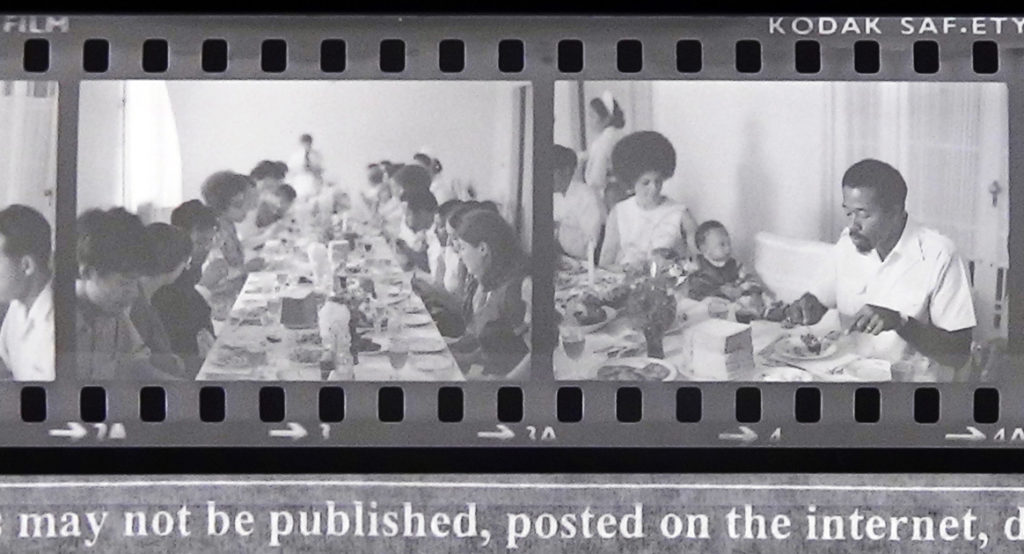
One example of the usefulness of the Cleaver negatives is a series, reproduced in part here, that depicts a birthday party held for Kathleen and Eldridge Cleaver’s son Maceo. The negatives provide an intimate portrait of the event, as the family is flanked by Korean and American attendees. Though these photographs were apparently not printed by Cleaver, we see through them a new thread of information that helps us piece together the visual history of Cleaver’s travels and, more broadly, the exchanges between the Black Panther Party’s International Section and solidarity movements among nations of Asia, Africa, and Latin America.

Rather than using images to simply supplement textual evidence in historical writing, this instance reveals the possibilities for expanding narratives through visual histories. How might we more frequently incorporate the use of photography in its rawest and least edited form—the negative—as a source in the study of history? How might we seek to incorporate visual resources into narratives while still maintaining a critical lens regarding these events? To begin to answer these questions as a community, researchers might begin to look for similar threads within their own source bases.
References
- Bloom, Joshua and Waldo E. Martin. Black Against Empire: The History and the Politics of the Black Panther Party. Berkeley: University of California Press, c2013.
- Malloy, Sean. Out of Oakland: Black Panther Party Internationalism During the Cold War. Ithaca: Cornell University Press, 2017.
- Wu, Judy Tzu-Chun. Radicals on the Road: Internationalism, Orientalism, and Feminism during the Vietnam Era. Ithaca: Cornell University Press, 2013.
- Young, Benjamin. “Juche in the United States: The Black Panther Party’s Relations with North Korea, 1969-1971.” In The Asia-Pacific Journal, Vol. 13, Issue 12, No. 2, March 30, 2015.
E. Rafael Perez is a PhD Candidate in the Department of History at the University of Chicago. He is a recipient of the 2018 Mellon Fellowships for Dissertation Research in Original Sources, administered by the Council on Library and Information Resources (CLIR). For more recommendations that reflect the recent rise of rigorous historical research related to the Black Panther International Section, please contact him at erp1[at]uchicago.edu.
North American mega-regional print book collections
This map from a 2012 report titled Print Management at “Mega-scale”: A Regional Perspective on Print Book Collections in North America indirectly relates to books and journals in the Romance languages but I thought it might be educational to share since so much of our daily cooperative collection building decisions fit into this framework. It visualizes how shared research library collections coincide with the emergence of mega-regions, or geographical regions defined on the basis of economic integration and other forms of interdependence. For those of us who work in the library, it reinforces the role that research libraries like UCB, UCD, UCSC and Stanford play at the national level and how paramount it is for us to continue to strive together for robust and comprehensive regional collections so that we can support the current and future research and teaching needs at one another’s campuses and beyond.
Event: Exhibit Reception
Hidden Treasures: UC Berkeley’s South Asian & Southeast Asian Special Collections opened in the Doe Library’s first floor Bernice Layne Brown Gallery on April 9 and will remain until August 30. You are welcome to attend a reception celebrating the opening, which will include a dance performance and light refreshments.
EXHIBIT RECEPTION
Tuesday, April 16, 5 PM – 7 PM
Morrison Library (first floor of Doe Library)
The exhibit retraces over a century of special collections acquisitions in arts, humanities and social sciences that represent a rich cultural and intellectual legacy for the South Asian and Southeast Asian community at Berkeley and beyond.
Co-sponsored by the Center for South Asia Studies, the Center for Southeast Asia Studies, and the Department of South & Southeast Asian Studies. Curated by the staff of the South/Southeast Asia Library.
